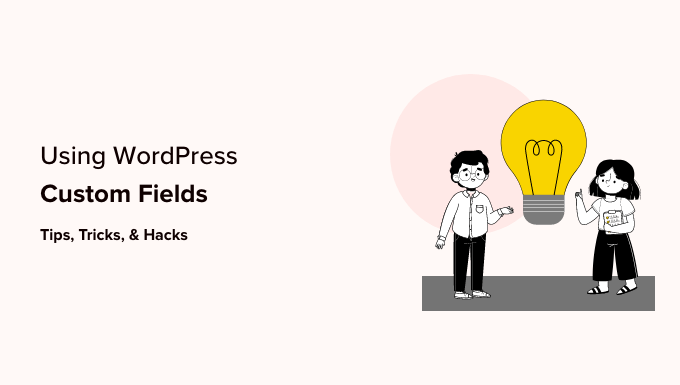“Exploring the Power of Custom Fields in WordPress: A Comprehensive Guide”
Are you eager to harness the potential of custom fields on your WordPress website? Custom fields stand as a powerful feature in WordPress, enabling you to augment your posts and pages with additional data and information. Many sought-after WordPress plugins and themes leverage custom fields to store crucial data, enhancing the overall functionality and customization possibilities. In this article, we will walk you through the utilization of WordPress custom fields, offering valuable insights, tips, tricks, and hacks to maximize their potential. To facilitate easy navigation, a table of contents is provided below, allowing you to seamlessly jump to specific sections of interest.
## What Are WordPress Custom Fields?
WordPress custom fields serve as metadata, enriching your posts or pages with supplementary information. When crafting a new post, page, or any other content type, WordPress segregates the content into two distinct parts. The first part comprises the content body, added through the WordPress content editor. Meanwhile, the second part encompasses metadata associated with the content, including the title, author, date, time, and more. Custom fields empower you to create and store your unique metadata. Initially hidden on the post edit screen, the custom fields option can be revealed by clicking on the three-dot menu in the top-right corner, selecting ‘Preferences,’ navigating to the ‘Panels’ tab, and enabling the ‘Custom fields’ option. Afterward, a click on the ‘Enable & Reload’ button reloads the post editor, making the Custom Fields panel visible below the content editor. These custom fields can accommodate any information related to the post, page, or other content types, with the provision to display this meta information in your theme—albeit requiring theme file editing.
## Adding Custom Fields in WordPress
To integrate custom fields, access a post or page in the block editor. Navigate to the Custom Fields meta box, furnish a Name and Value for the custom field, and save it by clicking the ‘Add Custom Field’ button. The field will be stored and prominently displayed in the Custom Fields meta box. Any necessary edits or deletions can be performed, with the imperative step of saving the post to preserve the custom field settings.
## Displaying Custom Fields in WordPress Themes
Effectively showcasing custom fields on your website necessitates editing your WordPress theme files and incorporating code snippets. It is recommended to employ a code snippet plugin like WPCode for efficient addition and management of custom code within your WordPress dashboard. After installing and activating WPCode, proceed to Code Snippets » + Add Snippet. Paste the code into the ‘Code Preview’ area, designating ‘PHP Snippet’ as the Code Type. Specify where the code should run on your website, such as ‘Page Specific’ and ‘Insert Before Post.’ Save the changes and visit the post to witness the custom field seamlessly integrated into action.
## Troubleshooting: Can’t Find Custom Field in Dropdown on Post Edit Screen
If your custom field eludes detection in the dropdown menu on the post edit screen, it may be due to WordPress defaulting to loading only 30 custom fields. To rectify this, consider increasing the limit by incorporating the provided code into your theme’s functions.php file or using WPCode. The code presented elevates the limit to 50, though you can tailor it further to meet your specific requirements.
## Creating a User Interface for Custom Fields Using Advanced Custom Fields
Managing multiple WordPress custom fields or authors on your website can be simplified by establishing a user interface for adding values to custom fields. The Advanced Custom Fields plugin offers a seamless solution, enabling you to create custom fields and a user-friendly interface for value addition. Following installation and activation, navigate to ACF » Field Groups, and click on ‘Add New.’ Develop a field group, incorporating fields of diverse types, such as text, image upload, dropdowns, checkboxes, and more. Save the changes and explore the newly integrated panel with custom fields beneath the content editor when editing a post.”


